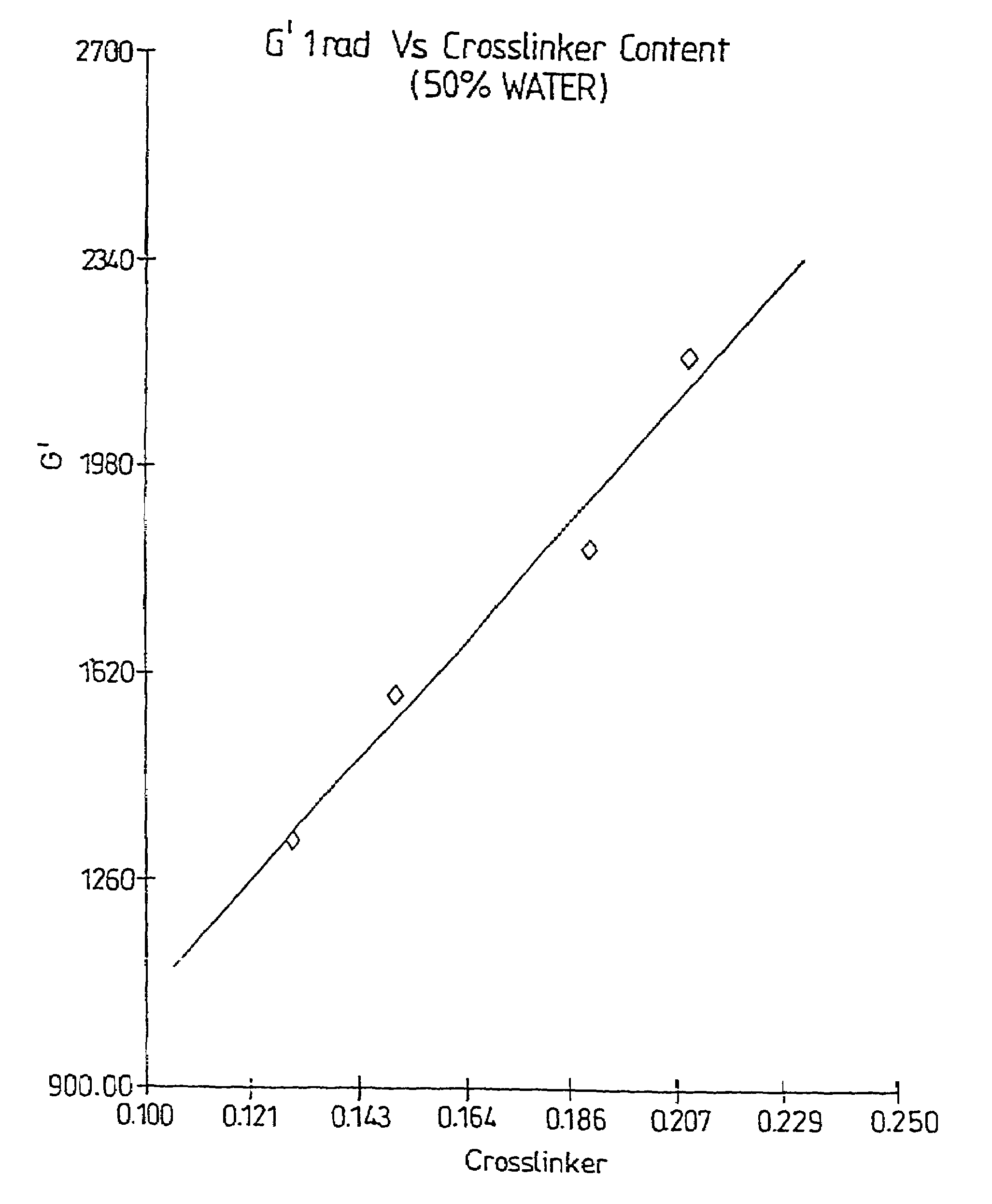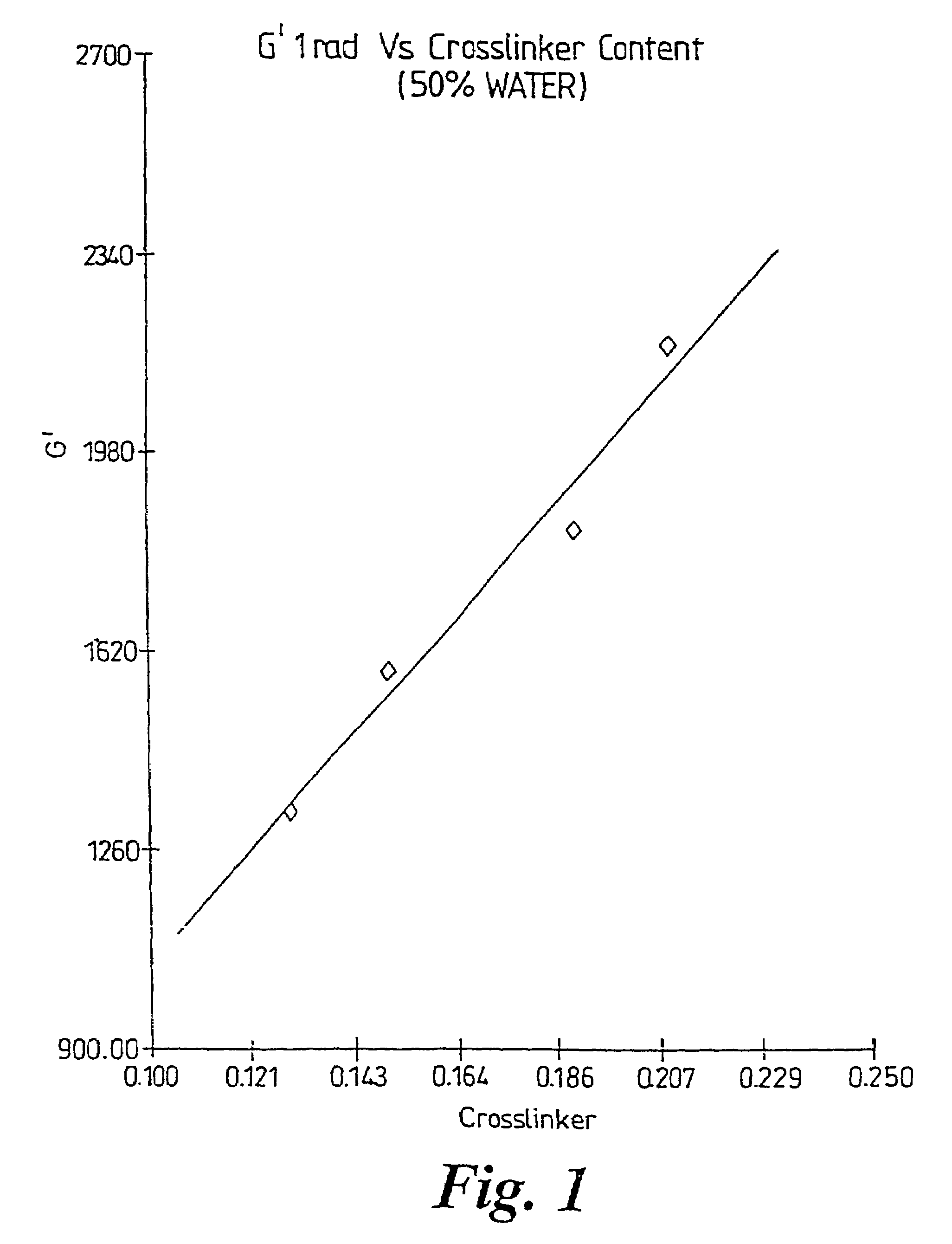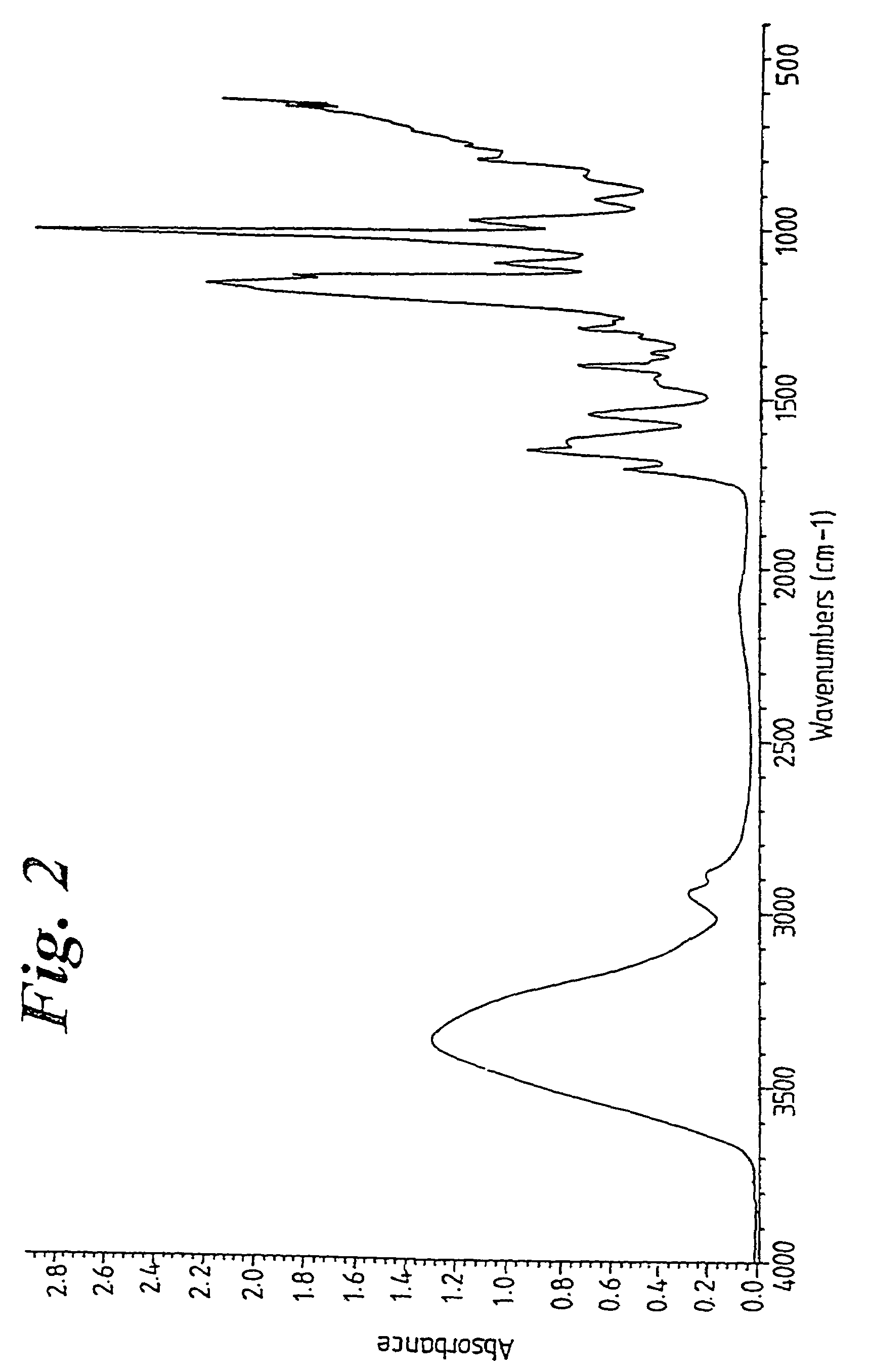Bioadhesive compositions and biomedical electrodes containing them
a biomedical electrode and composition technology, applied in the direction of adhesive types, conductive materials, organic conductors, etc., can solve the problems of likely change deleterious effects of adhesive and electrical properties
- Summary
- Abstract
- Description
- Claims
- Application Information
AI Technical Summary
Benefits of technology
Problems solved by technology
Method used
Image
Examples
example 2
[0079]In 20 parts of polyethylene glycol diacrylate (pEG600) (product of UCB Chemicals marketed under the trade name designation of Ebacryl 11) 6 parts of 1-hydroxycyclohexyl phenyl ketone (product of Ciba and marketed under the trade name designation of Irgacure 184) were dissolved. (This solution is designated solution A) (XL / PI). Separately 58 parts of the potassium salt of 3-sulphoproylacrylate (SPA) (product of Raschig) were dissolved in 58 parts distilled water to form solution D. A further solution designated solution E consisted of 42 parts water, 58 parts of the sodium salt of 2-acrylamido-2-methylpropane sulphonic acid (NaAMPS) (a product of the Lubrizol Corporation marketed as a 58% aqueous solution under the trade name LZ2405A). Mixtures of solutions D and E in the ratios 100:0, 90:10, 60:40, 50:50, 40:60, 10:90 and 0:100 were made to form pre-gel solutions. To 100 parts of each of these pre-gel solutions, 0.17 parts of solution A and 3 parts potassium chloride were adde...
example 3
[0082]To 57 parts of a 58% solution of the sodium salt of 2-acrylamido-2-methylpropane sulphonic acid (NaAMPS) (LZ2405A) 10 parts of a 58% solution of the potassium salt of 3-sulphopropyl acrylate (SPA) were added alone with 5 parts potassium chloride and stirred until the potassium chloride has dissolved. This solution was then mixed with 30 parts glycerol for 30 minutes. To the latter solution were added 0.15 parts of a solution containing 20 parts of polyethylene glycol diacrylate (pEG600) (product of UCB Chemicals marketed under the trade name designation of Ebacryl 11) in which 6 parts of 1-hydroxycyclohexyl phenyl ketone (product of Ciba and marketed under the trade name designation of Irgacure 184) were dissolved. The so-formed pre-gel solution was then cured as in Example 1. The impedance of the resulting gel, measured as described in Example 1, was 83 Ohms. Good skin adhesion properties were obtained for this gel. The impedance of a similar gel made from 67 parts of a 58% s...
example 4
[0083]The method of Example 3 was repeated with 1 part citric acid being added with the potassium chloride. The impedance of a similar gel (denoted 4B in Table 3) made from 67 parts of a 58% solution of the sodium salt of 2-acrylamido-2-methylpropane sulphonic acid but no SPA had an impedance of 96 Ohms demonstrating again that the addition of SPA reduces the impedance. From the data summarised in TABLE 3, however, it is seen that addition of citric acid also gives rise to a reduction in impedance, and the effect is surprisingly large for a gel with SPA and NaAMPS. The adhesion to skin and reusability characteristics for this gel of Example 4 containing citric acid and SPA were better than the gel described in Example 3.
[0084]
TABLE 3Example3A3B4A4BNaAMPS67576757(58% soln)SPA010010(58% soln)Glycerol30303030Citric Acid0011Crosslinker / 0.150.150.150.15PhotoinitiatorImpedance105859661(ohms)
PUM
| Property | Measurement | Unit |
|---|---|---|
| elastic modulus | aaaaa | aaaaa |
| elastic modulus | aaaaa | aaaaa |
| impedance | aaaaa | aaaaa |
Abstract
Description
Claims
Application Information
 Login to View More
Login to View More - R&D
- Intellectual Property
- Life Sciences
- Materials
- Tech Scout
- Unparalleled Data Quality
- Higher Quality Content
- 60% Fewer Hallucinations
Browse by: Latest US Patents, China's latest patents, Technical Efficacy Thesaurus, Application Domain, Technology Topic, Popular Technical Reports.
© 2025 PatSnap. All rights reserved.Legal|Privacy policy|Modern Slavery Act Transparency Statement|Sitemap|About US| Contact US: help@patsnap.com



